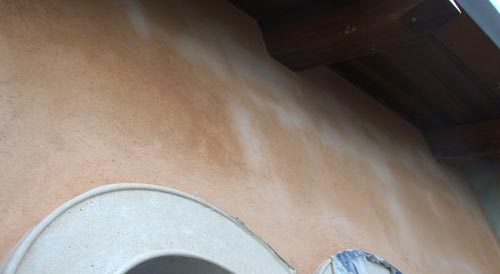Efflorescence or "bloom" is a type of white stain that can appear on the surface of concrete, lime and other masonry surfaces. It results when water passes through the concrete, bringing water-soluble salts and other materials in the substrate with it to the surface. The addition of pigment does not have any bearing on whether or not efflorescence will occur, but it is certainly more obvious on a colored surface.

Efflorescence can be caused by extra water added during toweling, exposure to lower temperatures, rain, excess humidity, etc. and exhibits no time preference to make its appearance. Luckily efflorescence is one of the easier stains to clean, especially if new. Dry brushing with water and a stiff brush can often remove light stains. Heavier, well-established efflorescence from salts is generally removed by using muriatic acid in a solution:
- 1 part acid
- 12 parts of water
Wet the surface thoroughly before and after scrubbing the solution. Muriatic acid is very dangerous to work with, therefore proper precautions must be taken and label directions must be followed. Stains that are not removed by this method may require proprietary compounds to remove.
Related Instructions
Fresco & Patina Application for Lime Plasters
